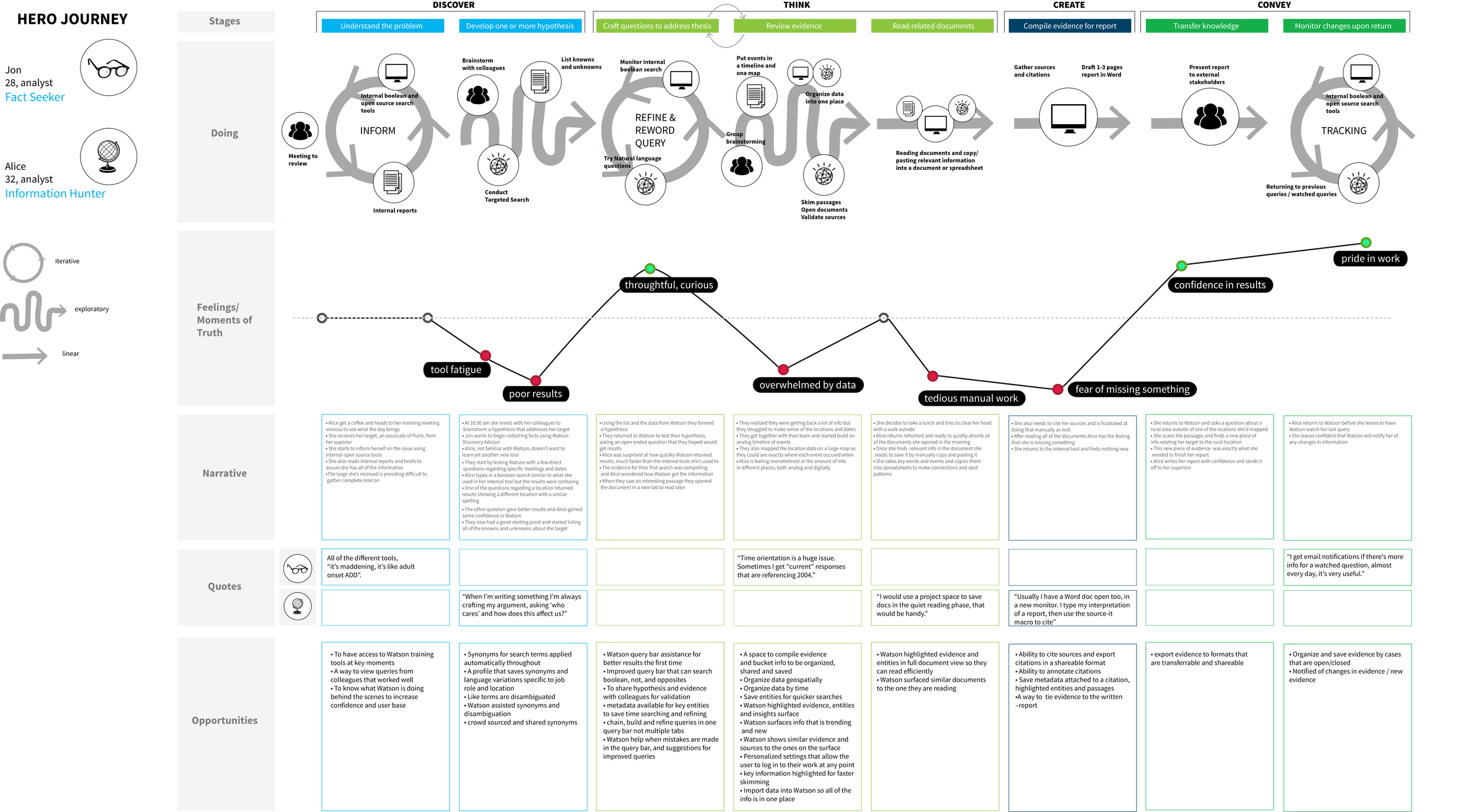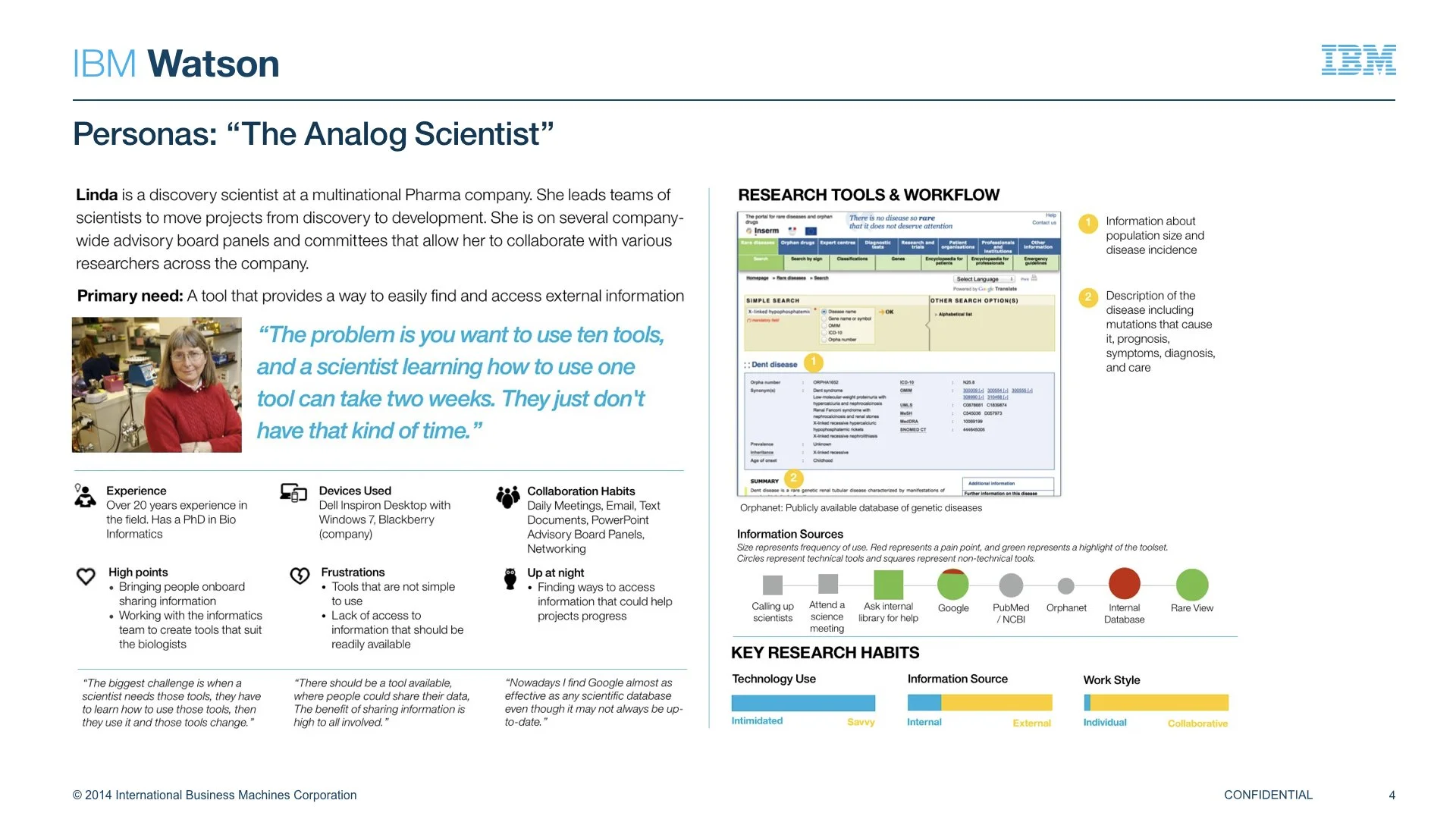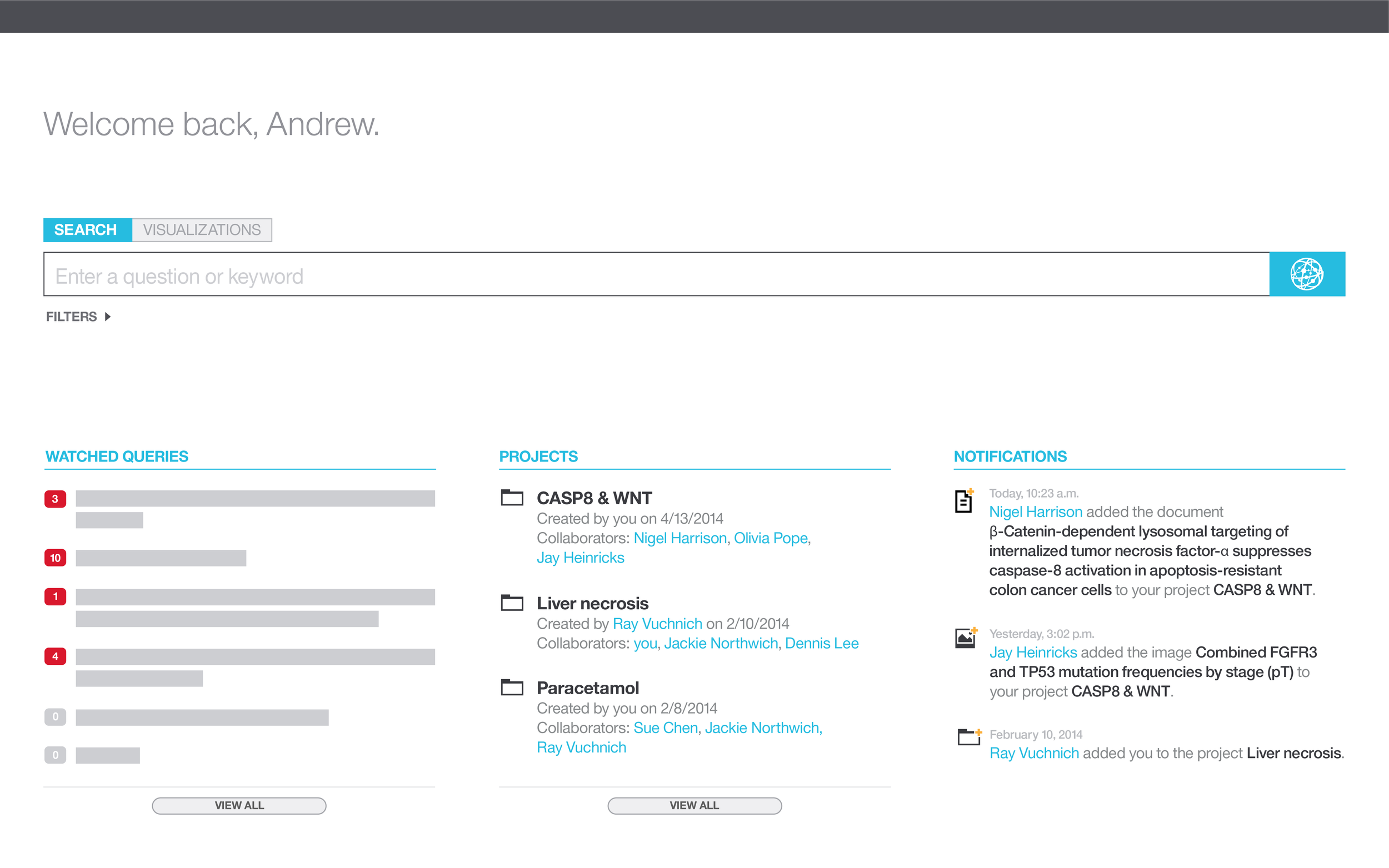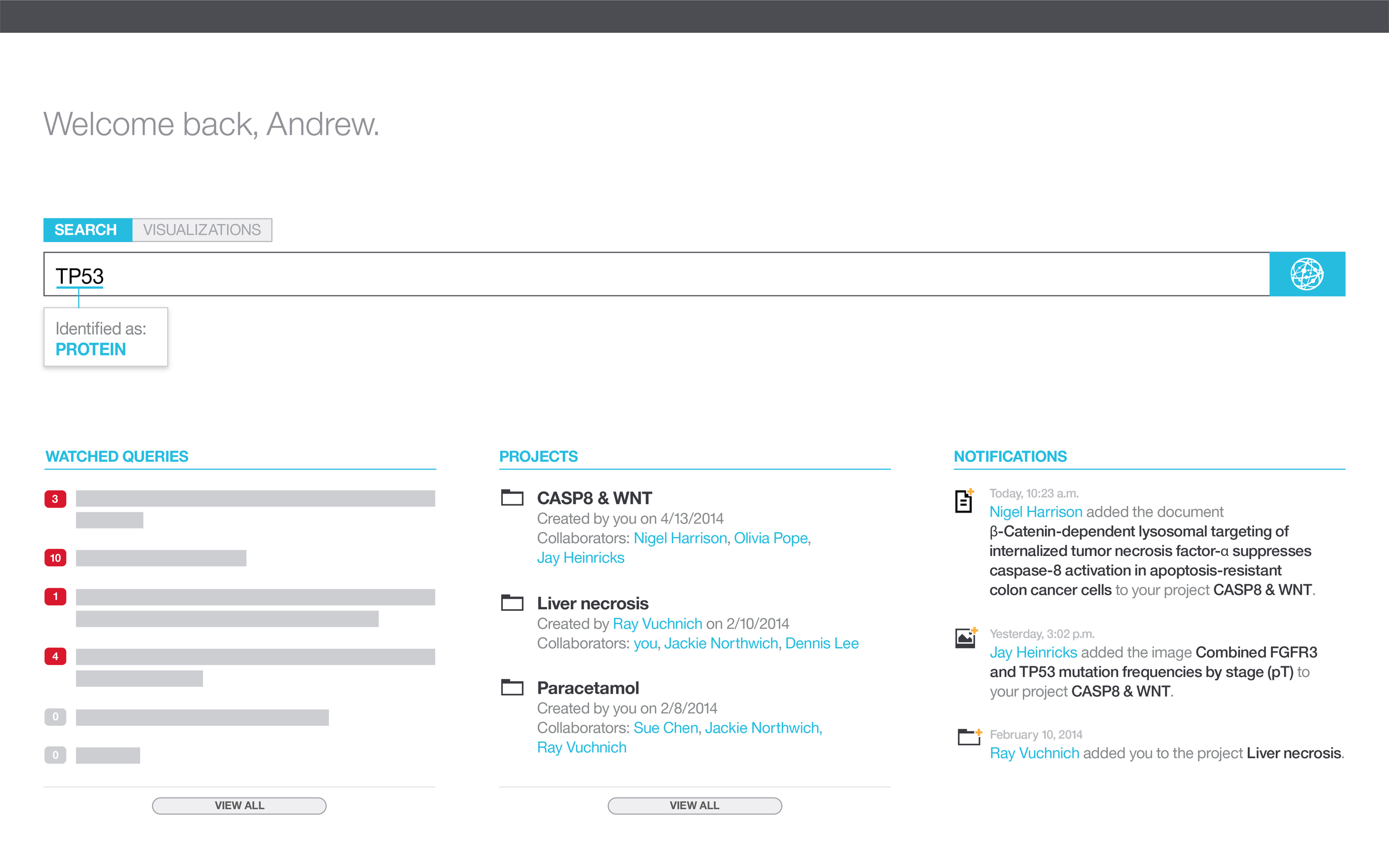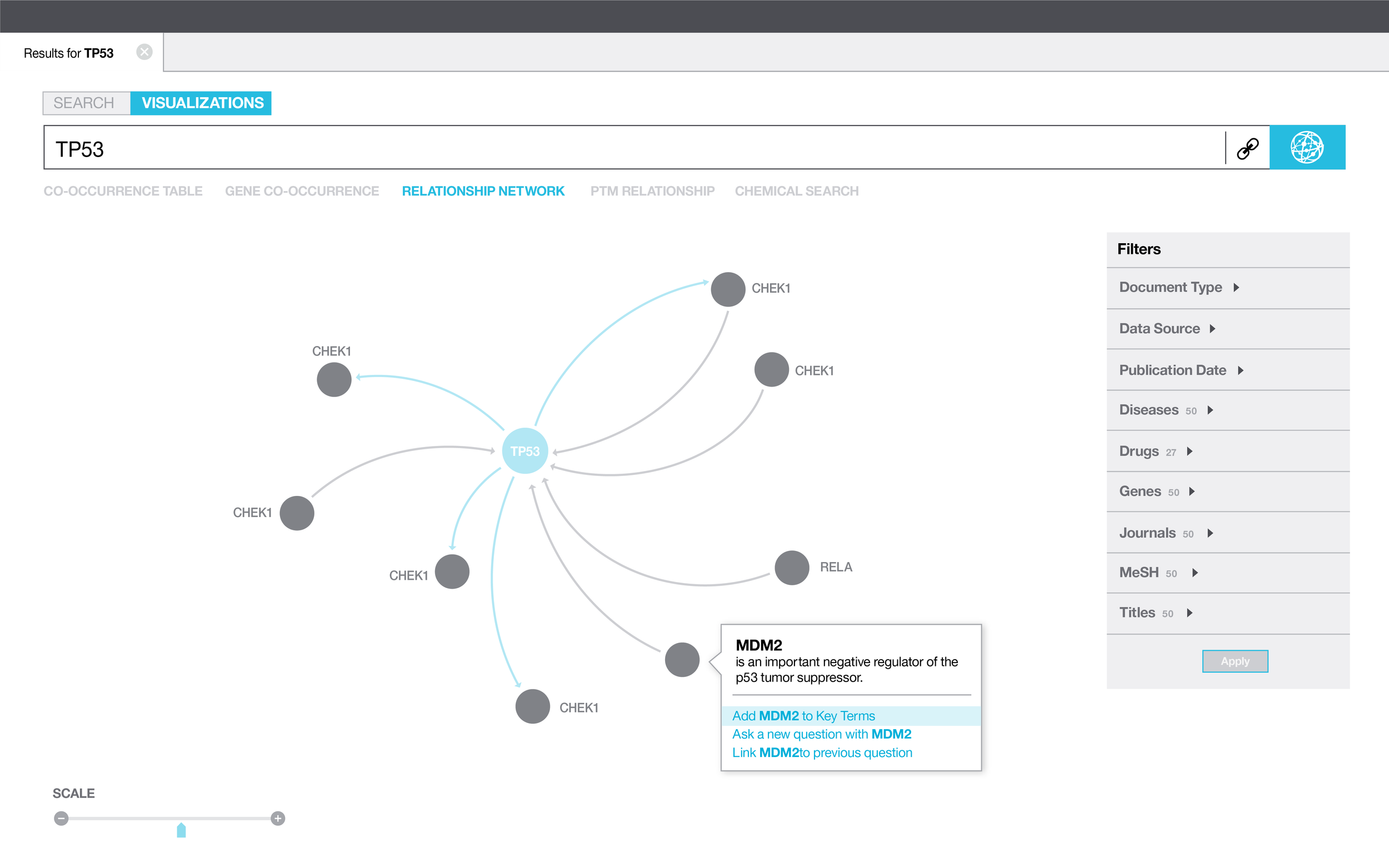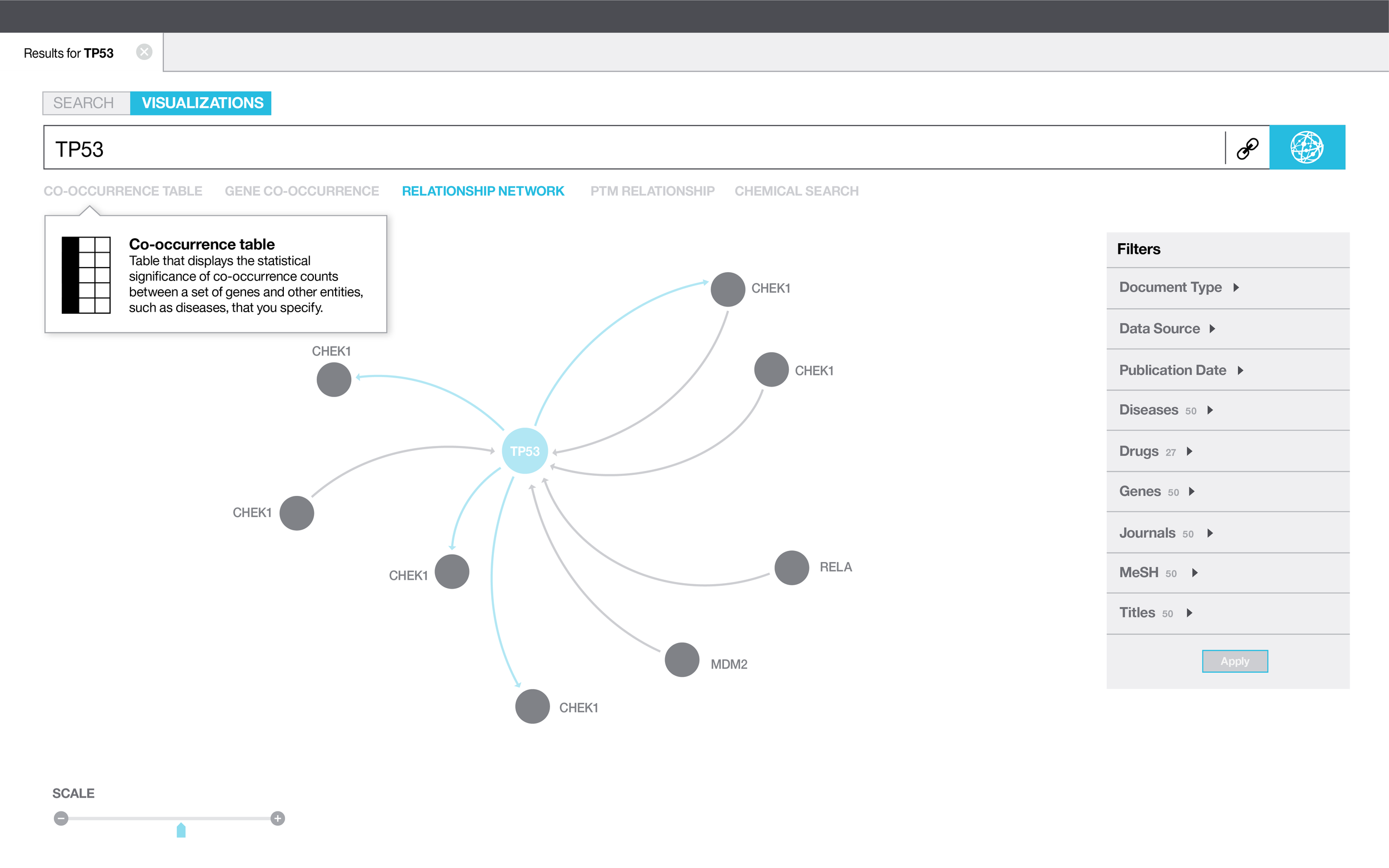IBM Watson
Role
Senior product designer, Design lead
Year
2013 - 2018
Summary
I joined IBM Watson in Austin, Texas at a pivotal moment: IBM Design was just forming, aiming to embed design thinking at the core of one of the world’s largest tech companies, and Watson had just made headlines by winning Jeopardy! — sparking a bold mission to commercialize AI.
From day one, I was immersed in both innovation and ambiguity. I joined a small, fast-moving team to deliver the first-ever IBM Watson partnership: a proof of concept for Welltok’s CafeWell platform. We designed and delivered the prototype in just a few weeks, helping define how cognitive computing could shape personalized health engagement.
Following that success, I moved into a permanent role on the Watson Discovery Advisor team, where I spent several years designing one of Watson’s flagship products. We partnered with government agencies and pharmaceutical researchers to build a search and discovery tool capable of uncovering hidden connections between entities — whether genes and proteins or individuals and locations. I worked end-to-end across product design, UX, and research, from initial concept to multi-vertical release.
As Watson’s API suite matured, I identified an opportunity to scale our impact: helping external companies build AI into their own products. I founded and led the IBM Watson Ecosystem Design Team, a group focused on bringing Watson’s capabilities to startups and partners. We worked hands-on with early-stage teams to shape product strategy, embed cognitive features, and deliver thoughtful, user-centered AI experiences.
Throughout my five years at IBM Watson, I helped shape some of its earliest consumer-facing AI products while also building new pathways for external adoption — merging deep technical complexity with a strong design culture that helped shift IBM toward a new era of product innovation.
Highlights
Pioneered the first consumer AI experience using Watson Discovery Advisor, designing and building a product that made cutting-edge AI accessible and valuable to everyday users, leading to significant improvements in user engagement and task completion rates
Conceived and successfully pitched a design-led consultancy model within IBM, enabling clients to integrate Watson capabilities seamlessly into their own products and services.
Foundational contributor to IBM Design’s transformation, working closely with VP Phil Gilbert and early design leadership to help define IBM’s modern design process and culture as the organization scaled from a handful of designers to a global team of thousands.
Watson Discovery Advisor
🤖
Watson Discovery Advisor 🤖
Summary
During my two-year tenure at IBM Watson, I was the lead product designer and user experience researcher for Watson Discovery Advisor (WDA) — a search and discovery application designed for researchers working in government intelligence and pharmacology.
WDA was built as an on-premise application, allowing secure ingestion and training of individualized corpora — from classified documents in the public sector to dense scientific literature and datasets in pharmaceutical research.
The core challenge was helping researchers uncover non-obvious relationships between entities — such as links between proteins and diseases in pharma, or individuals and locations in government investigations. These connections often sparked critical breakthroughs, yet the data complexity and fragmentation made them difficult to find with traditional tools.
My Role
As a hands-on product designer and researcher, I led the design for both verticals, ultimately focusing more deeply on the government use case. I spent significant time on-site in Washington, D.C., conducting contextual user interviews, leading co-design workshops, and testing prototypes directly with analysts and researchers in secure environments.
Through these sessions, we learned that the interface needed to balance advanced natural language search with clear visualizations of entity relationships — enabling users to explore hypotheses, trace patterns, and validate theories across disparate sources.
Role
Senior designer and researcher
Product
Watson Discovery Advisor
Year
2013 - 2015
Team
Nicolas Quintero: designer, Claire Koehler: designer, Mark Marrara: manager
Watson Discovery Advisor
Overview
WDA: Government Application
One of the biggest challenges early on was access. Due to the sensitivity of the work and the security clearances required, we had limited direct contact with our target users. To overcome this, we proposed an off-site design thinking workshop as a low-risk way to begin collaboration. The workshop was a turning point—not only did it provide valuable insights, it also helped us earn the trust of stakeholders.
Following that workshop, we were invited on-site to conduct in-depth user interviews and field research. These sessions were conducted under tight security conditions—no phones, laptops, or cameras allowed—forcing us to be creative in our methods. Over the course of our visit, we interviewed about ten users across various roles, observed their workflows, and ran contextual exercises to understand how they collect, evaluate, and synthesize information.
The research culminated in a set of detailed journey maps that we presented to users, engineers, and stakeholders. These maps were instrumental in aligning the team and shaping the scope of Release One. We used the insights to define key user needs, prioritize features, and structure our sprint cycles.
WDA: Pharmacology Application
In parallel, we developed designs tailored to pharmacological research, focusing on uncovering molecular and genetic relationships. One wireframe prototype explored how a researcher studying TP53—a gene that produces a tumor-suppressing protein—might search, disambiguate, and trace connections through WDA.
Our interface included a smart query bar that suggested relevant terms and prompted disambiguation before executing a search. This design decision was backed by research across both verticals: researchers frequently encounter acronyms or terms with multiple meanings, and clarity up front increases trust in the results.
Search results landed users on a dynamic overview page, surfacing the target entity and its related concepts. Users could then explore connections, view supporting evidence, and investigate further through a rich data visualization interface. They could also apply filters, save graphs to research projects, and "watch" a question—receiving alerts when new research matched their area of interest.
Cross-Product Collaboration
As a small design team embedded in a highly technical environment, we worked closely with dozens of engineers developing the Watson knowledge graph, as well as with product managers, marketers, and legal teams. The core challenge was the complexity of the underlying AI technology—how Watson ingests, organizes, and surfaces information from a custom-trained corpus. To design effectively, we had to deeply understand how the knowledge graph operated, without letting that complexity surface in the product experience.
Our role was to translate the sophistication of the system into a clear, intuitive interface. This meant ongoing collaboration with engineers to understand system constraints and possibilities, and close alignment with product teams to ensure we were solving the right problems for researchers. The success of the product hinged on our ability to maintain this balance: respecting the depth of the technology while delivering a streamlined, approachable experience for the end user.
Success & Impact
Watson Discovery Advisor (WDA) was one of the first commercially available applications to leverage IBM Watson’s AI capabilities for real-world problem solving. As a product, it demonstrated the power of cognitive computing in specialized research domains, particularly in pharmacology and government intelligence. WDA allowed researchers to uncover hidden relationships between entities such as genes, proteins, individuals, and organizations—surfacing insights that were previously buried in massive, unstructured datasets. The application helped validate the commercial potential of Watson’s knowledge graph and natural language understanding technologies, paving the way for future enterprise use cases and influencing the design of the Watson Discovery API, which today powers multiple IBM products. WDA's success also helped establish credibility for human-centered design practices within IBM, showing how thoughtful design and AI could work hand-in-hand to deliver meaningful results.
Watson Discovery Advisor Journey Map
Watson Discovery Advisor Persona
Wireframes created in Illustrator
Design vision video with non working code 2014
Live demo, working code, with narration 2015
Impact
75%
Time to insight reduced for research professionals using Watson Discovery Advisor in pilot programs.
6 cancer targets
WDA helped researchers at Baylor College of Medicine uncover six new potential cancer targets in just weeks—a process that traditionally would have taken months or years.
$100million
Early Watson commercial applications, including WDA, helped generate over $100 million in revenue pipeline by 2016.
